Designing a pump track to go uphill
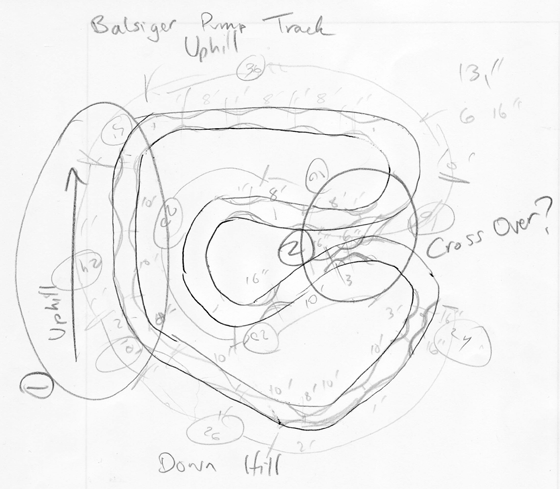
Hi Lee,
First of all, thank you for writing a great book. I’ve read Welcome to Pump track Nation several times and have been measuring out my pump track and started thinking about draining. In fact, I might have developed a problem. I’m beginning to wish it rained dirt, and every flat yard I see I ask, why no pump track?
My big question is, on the long return side (circled and labeled #1) up to my berms I will have to pump up hill (maybe a 10% grade, I haven’t measured it yet). What is the optimum pump size and spacing for going up hill? Should they be taller and closer, smaller and closer….
Another thing that you could perhaps comment on is making a “switch” spot to reverse direction. What would that look like at the location circled and labeled #2?
Thanks for you advise. I would like to build once and get it right.
Joe
Hey Joe,
Thanks for writing. First your track:

My backyard pump track is built into a steep hill:
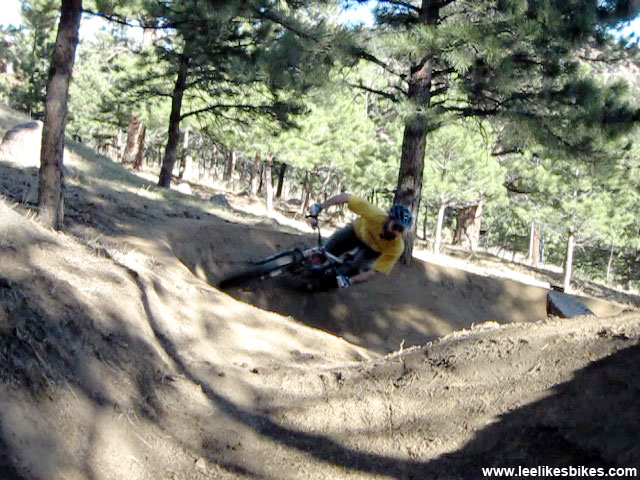
We’ve learned a lot out here:
Good spacing is good spacing. On my track we tried some crazy things, but the magic proportions in Welcome to Pump track Nation seem to work well everywhere.
Here is a set of rollers with WTPTN standard, but pretty aggressive, shape. This would be good for a strong/skilled rider.

Here are the same rollers on a 10 percent grade.

Notice:
• The front sides are about 1/3 taller.
• The backsides are about 1/3 shorter.
Dude, that sucks! You basically have to bunny hop a huge frontside — and for all that trouble you get puny pump on the backside. You’d want to make the backsides taller, but that makes the frontsides taller too. Pumping up a hill like this requires great technique and a lot of power: excellent for training but hard to live with day to day.
Which leads us to these notions:
Build speed along the contour. Imagine a sweet singletrack that weaves along a sideslope, weaving in and out and over undulations, building speed the whole way. So sweet. Build that.
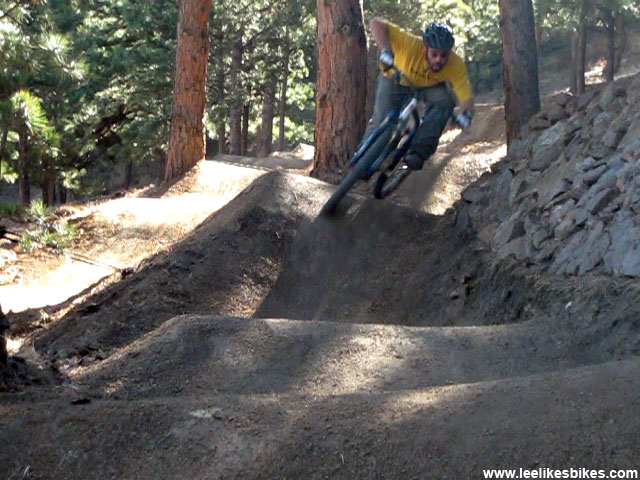
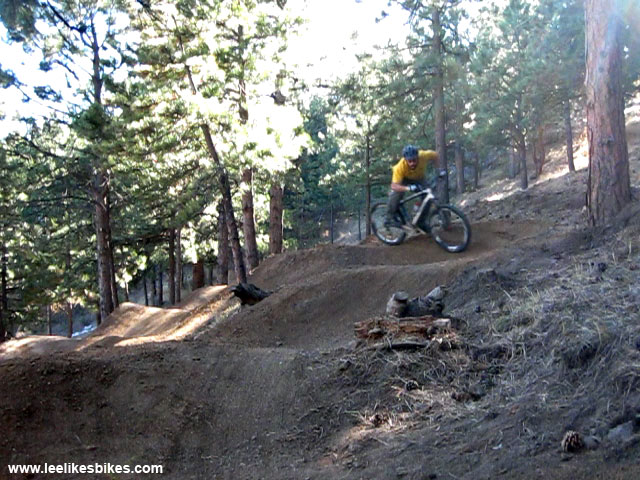
Gain/lose elevation in the turns. You can generate lots of speed downhill, and you can carry more speed than you think uphill. Also, from a pumping standpoint, a berm is a really big shape with tons of lateral backside.
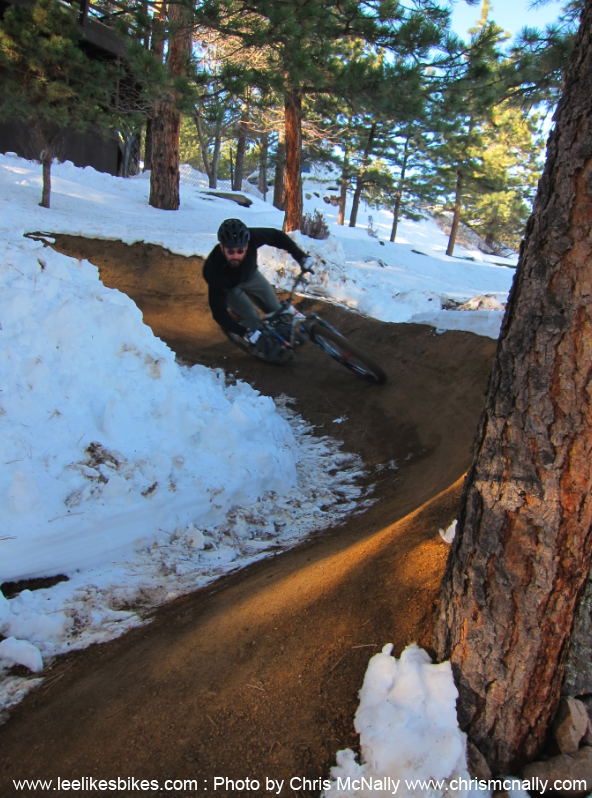
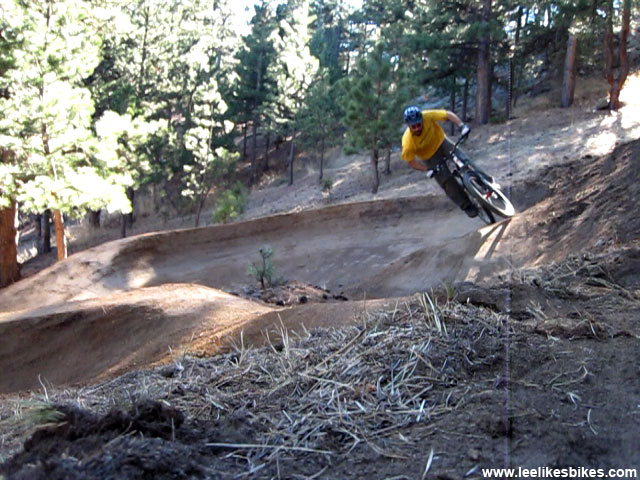
We were worried we wouldn’t make it up this corner. Wrong. You can haul ass!
If you need to climb, do it after a fast downhill corner. Like this:
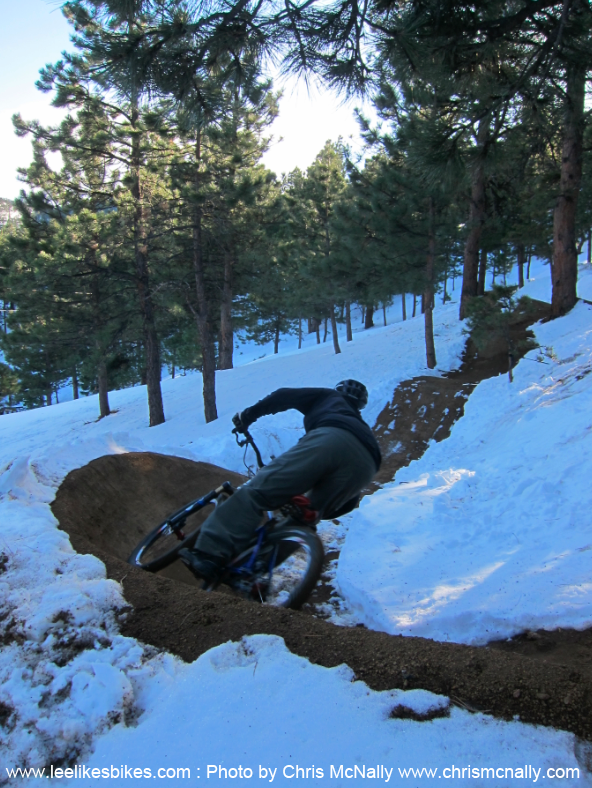
Pump this corner for all it’s worth, then — BOOM BOOM — two big hops up the hill.
Create options. When we build public tracks, we minimize crossovers for safety reasons. On a private track, the more options the better. Maximize the value of each square foot. I like the spot you’re thinking about. I’d also make a connection between the downhill straight and the big hairpin.
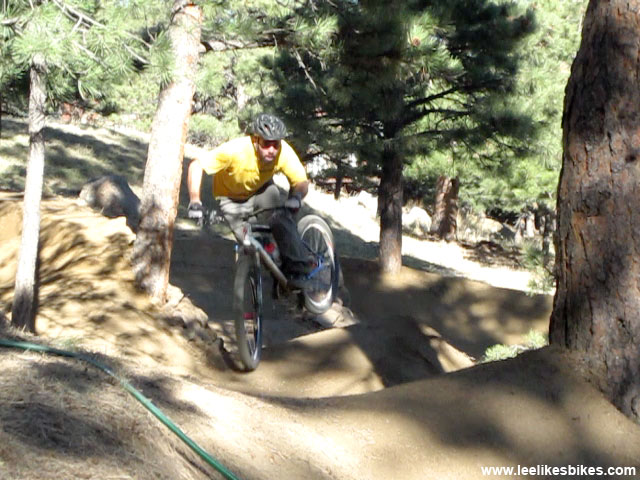
Based on my experience building and riding on a hill, I’d re-think your layout. How can you use the sideslope more — and avoid the long climb?
BRAAAP!
Lee
Are you designing a track?
• The ebook Welcome to Pump Track Nation is a great place to start.
• Learn about LLB Trailbuilding and Design Services.
• Email me for a custom design.
Know more. Have more fun!
Join the leelikesbikes mailing list:

Leave a Reply
Want to join the discussion?Feel free to contribute!